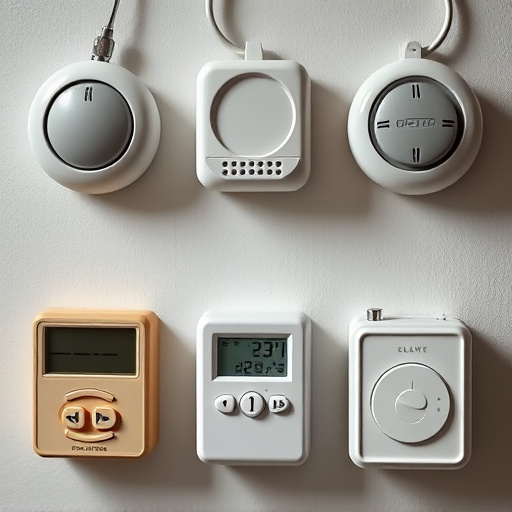Wearable alarms with customizable loud sirens offer personal safety through powerful sounds that deter threats and attract attention. Key features include sensitivity adjustments and customizable settings for movement or sound activation. The Personal Alarm Sound Coverage Area is crucial, influenced by noise, terrain, weather, and user position, affecting effective range. Proper usage involves testing in diverse scenarios, understanding manufacturer specifications, and maintaining devices to ensure reliability.
“Discover the power of portable protection with wearable alarms featuring loud sirens—your personal safety net in an instant. This article explores how these innovative devices offer a unique approach to self-defense, providing both functionality and peace of mind. From understanding their basic operations to delving into key features like sensitivity adjustments and customization, we’ll guide you through the essentials. Additionally, we’ll clarify the concept of the Personal Alarm Sound Coverage Area, ensuring you know exactly how far your protection reaches.”
- Understanding Wearable Alarms: Functionality and Benefits
- Key Features: Sensitivity, Controls, and Customization Options
- Personal Alarm Sound Coverage Area: Assessing Effective Reach
- Safety Considerations and Potential Challenges Overcome
Understanding Wearable Alarms: Functionality and Benefits
Wearable alarms with loud sirens are innovative personal safety devices designed to offer immediate protection in various situations. These compact, portable gadgets are equipped with robust speakers that emit powerful alarm sounds, ensuring maximum attention-grabbing potential. The functionality goes beyond just a loud noise; they can be tailored to different needs, offering customizable settings for the intensity and duration of the siren.
The primary benefit lies in their convenience and accessibility. Wearable alarms can be easily carried on one’s person, whether as a pendant or integrated into clothing or accessories. This means that help can be quickly summoned during emergencies, with the personal alarm sound serving as a powerful signal to deter potential threats and attract nearby attention. The coverage area of these devices is typically excellent, allowing for effective communication over a good distance.
Key Features: Sensitivity, Controls, and Customization Options
Wearable alarms with loud sirens are designed to provide users with a powerful personal safety net, and key features such as sensitivity, controls, and customization options play a crucial role in their effectiveness. Sensitivity adjusts the alarm’s responsiveness to movement or sounds, ensuring it goes off when needed. Controls allow for quick activation, deactivation, and volume adjustment, giving users precise control over their personal alarm sound coverage area. Customization options enable individuals to personalize settings like tone, duration, and repetition, tailoring the alarm to specific preferences and scenarios.
These features collectively enhance the usability and impact of wearable alarms, making them versatile tools for various situations, from outdoor activities to daily commuting. By offering customizable sound coverage areas and precise control mechanisms, these devices empower users to protect themselves with confidence, knowing their alarm will respond swiftly and distinctly in case of danger.
Personal Alarm Sound Coverage Area: Assessing Effective Reach
When evaluating wearable alarms with loud sirens, understanding the Personal Alarm Sound Coverage Area is paramount. This refers to the effective range at which the alarm’s sound can be heard and trigger a response. Factors influencing this area include ambient noise levels, terrain, weather conditions, and the user’s physical position. For instance, in an open field, the siren’s reach might extend far and wide, ensuring maximum exposure. However, in urban settings with high-rise buildings or dense foliage, sound distortion and absorption can significantly reduce the effective coverage area.
Assessing this aspect involves practical testing under various scenarios to determine when and where the alarm’s sound is most effective. Users should consider their typical environments and activities to ensure the wearable alarm provides adequate protection. For outdoor enthusiasts, a broader coverage area might be preferable, while those in urban centers may need to focus on ensuring audibility in close quarters or within buildings.
Safety Considerations and Potential Challenges Overcome
Wearable alarms with loud sirens offer enhanced personal safety, especially in potentially hazardous situations or remote areas. However, users must consider the personal alarm sound coverage area – how far the alarm’s siren can be heard. This is crucial for ensuring that help arrives promptly. Manufacturers often provide specifications for sound coverage, which can vary based on environmental factors like terrain and vegetation density.
One potential challenge with these devices is false alerts or misusage. To overcome this, wearers should practice proper alarm activation procedures and ensure they understand the sensitivity settings. Additionally, regular maintenance and testing of the device, including checking battery life and ensuring the siren functions correctly, are essential to guarantee reliability in critical moments.
Wearable alarms with loud sirens offer a powerful personal safety solution, especially in situations where quick response is crucial. By understanding their functionality, key features, and optimal Personal Alarm Sound Coverage Area, users can make informed choices to protect themselves effectively. Overcoming potential challenges ensures these devices live up to their potential as reliable safety tools in various environments.
